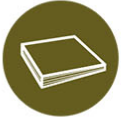DHA eNews - EU Sets New Limits For Formaldehyde
An important part of DHA's mission is to promote decorative hardwood products. Architects and designers are key decision makers in the purchase of our products. I'm happy to report that architects and designers have responded with overwhelming interest in DHA's continuing education course, Hardwood Plywood, Engineered Wood Floors, and Hardwood Veneer: The Basics. In the first four months alone, more than 1,300 design professionals have already completed our course, demonstrating an incredible interest in decorative hardwoods. The typical non-DHA course is completed by approximately 1,000 professionals in an entire year. DHA will explore ways to expand on this success in the coming months.
Another important role is advocating with our allies for a positive policy environment that allows our businesses to succeed while protecting forests. This is a delicate balance that too often gets out of whack. Fortunately, the Supreme Court has recently corrected the regulatory overreach in the waters of the U.S. (WOTUS). DHA and our allies will remain vigilant. For more, see our Policy section below.
If you have questions or comments, contact me. I look forward to hearing from you.

Keith A. Christman, President
Decorative Hardwoods Association

In May, DHA launched our continuing education program for architects and designers on a new platform. In just four months, more than 1,300 professionals have already completed the program. This performance is particularly remarkable as in the past, only about 1,000 professionals have taken similar courses on the same platform each year. DHA’s course, Hardwood Plywood, Engineered Wood Floors, and Hardwood Veneer: The Basics qualifies for a variety of professional education and learning credits, including AIA Health, Safety, and Welfare credit.
In August 2026, a new European Commission regulation will reduce the limit for formaldehyde emissions from furniture and wood-based products to 0.062 mg/m3, about 0.07 ppm. The new standards are higher than current U.S. standards for hardwood plywood, set at 0.05 ppm, but lower than those for particleboard and MDF. DHA learned that European regulators will develop guidance that should make it easier for U.S.-based manufacturers to comply.
The European Commission is investigating potential illegal imports of Russian birch plywood products into the European Union. There has been a significant increase in imports of Russian birch plywood into Turkey and possibly Kazakhstan, and an increase in exports of birch plywood from both countries to the EU—although neither has been a significant producer of birch plywood in the past. The EU banned Russian wood after Russia invaded Ukraine.
The U.S. Environmental Protection Agency amended regulatory requirements for wetlands, reducing federal overreach, as a result of the recent Supreme Court ruling that narrowed the definition of Waters of the U.S. (WOTUS). Many bodies of water will no longer be subject to federal regulation unless they are both navigable or interstate, as required by the Clean Water Act. However, there continues to be uncertainty about the new rules.
The U.S. Forest Service recently announced $150 million in funding to "help underserved and small acreage forest landowners connect to emerging voluntary climate markets."
Last fall, a carbon offset company bought more than 100,000 acres of forestland in New Hampshire. Now, that company has scaled back timber harvesting in the forest as part of its business model. Members of the community and state and local government are concerned about how this could affect the timber industry and state and local revenue.
The Hardwood Federation and the U.S. Chamber of Commerce have requested a comment period extension on a proposal by the Biden administration to change federal permitting requirements. The proposal would add more red tape to a process that already takes up to 4.5 years to complete.
The volume of cabinet sales fell by 13% year-to-date vs. the same period last year. The value of cabinet sales increased by more than 4% in the same period. In June, cabinet sales volume was down by more than 16% vs. last June and up by nearly 6% vs. May.
Residential furniture orders grew by 23% in June 2023 vs. June 2022. However, new orders were down by 8% year-to-date vs. the same period last year. This June, most numbers improved vs. May but were down vs. June 2022. For example, shipments in June 2023 were 28% lower than in June 2022.
The Canadian Wood Council has published the results of its extensive test of how mass timber performs under severe fire conditions. CWC stated that mass timber is a "safe construction material" and that "this scientific proof of mass timber's exceptional structural fire performance helps address concerns about its suitability for use in larger and taller building applications."
Roseburg Forest Products has established a $250,000 Weed Community Scholarship Fund for local high school graduates, to help support the recovery of the Lincoln Heights, Weed, and Lake Shastina communities.
In Scotland, a member of parliament stated: "Almost 16 million trees have been chopped down on publicly owned land in Scotland to make way for wind farms." Forestry and Land Scotland responded to the critique by stating that it had planted more than 500 million trees since 2000 and that the quantity felled for wind farms was roughly equal to its annual harvesting program.
This year, wildfires in Canada have already emitted about 1.5 billion tons of carbon dioxide—triple the annual pollution caused by burning fossil fuels in the country, and more than the combined emissions from 100 countries. Worse, this year's fire season is far from over.
Pennsylvania's lawmakers increased the annual funding for hardwood research and promotion from $474,000 to $725,000. With nearly 17 million acres of forestland, the state has the most abundant hardwood forests in the country. More than 60,000 Pennsylvanians are employed in the forest products industry.
This year-to-date, U.S. exports of white oak logs to the European Union have more than doubled, up by 116% through June (note that this is off a relatively low base). White oak logs exported to the EU are primarily for veneer production.
After Europe banned the import of Russian wood products, the production of plywood in Russia reached its lowest point in 10 years. There has been an increase in the production of Russian wood-related products since the beginning of the year; much of this has been exported to China.
What large country lost the most forestland last year?





